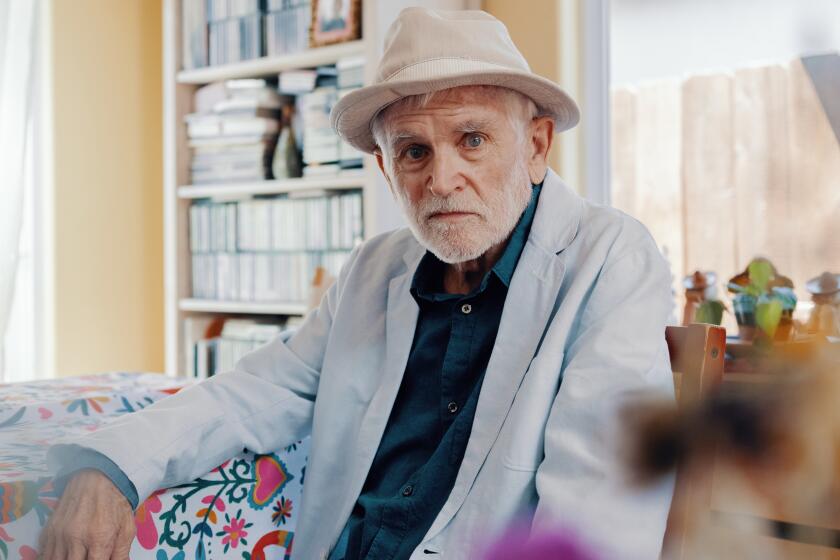Saving the bald eagle, one eaglet at a time
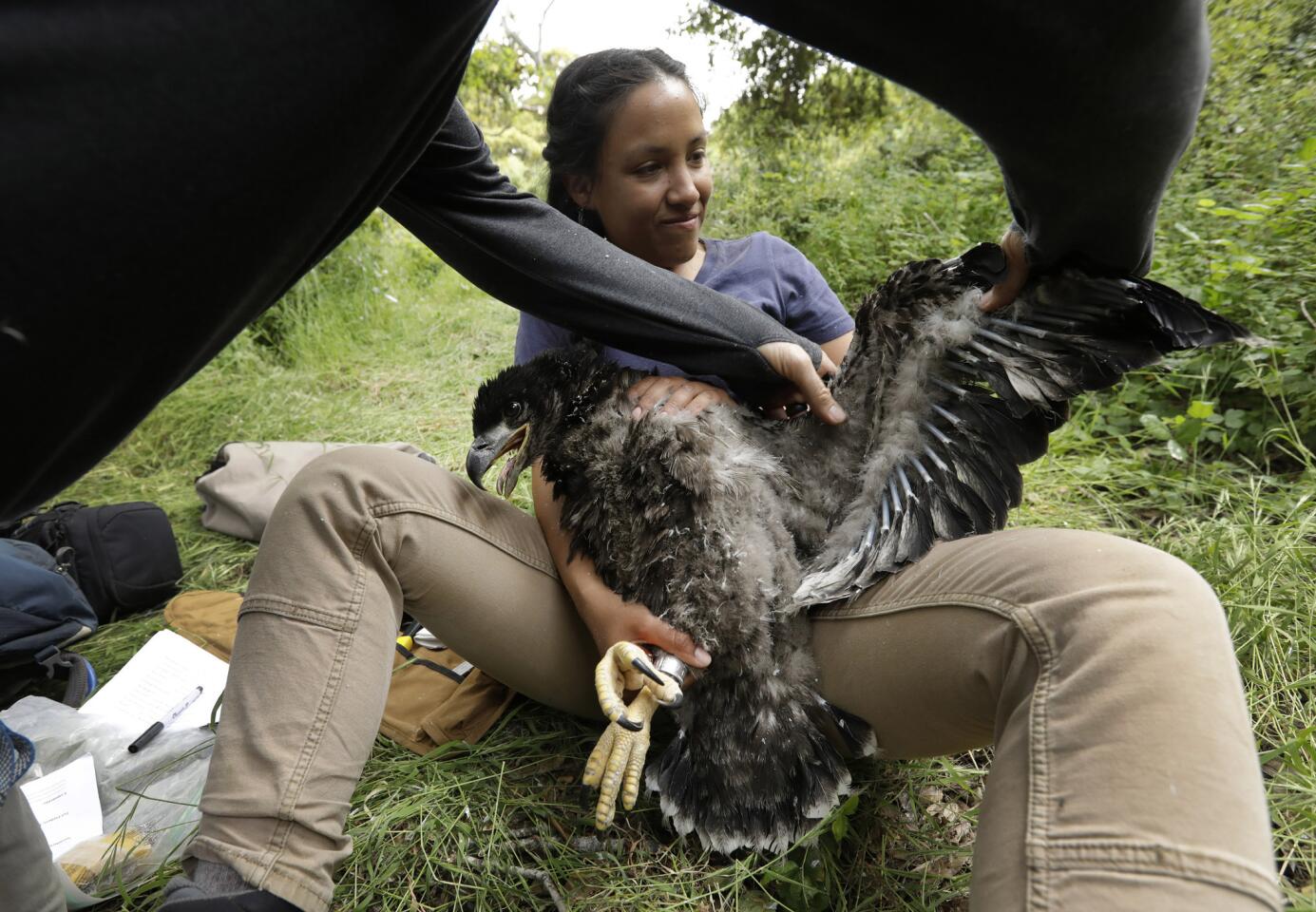
Dr. Peter Sharpe checks the wings and feathers of the eaglet as seasonal tech Laura Echávez holds him. Sharpe, a wildlife biologist, has spent years trying to restore the bald eagle to its historic habitat on the Channel Islands. Bald eagles were wiped out on the Channel Islands by the mid-1960s as a result of DDT-contaminated waste being dumped into the local waters.
(Katie Falkenberg / Los Angeles Times)Saving the bald eagle, one eaglet at a time
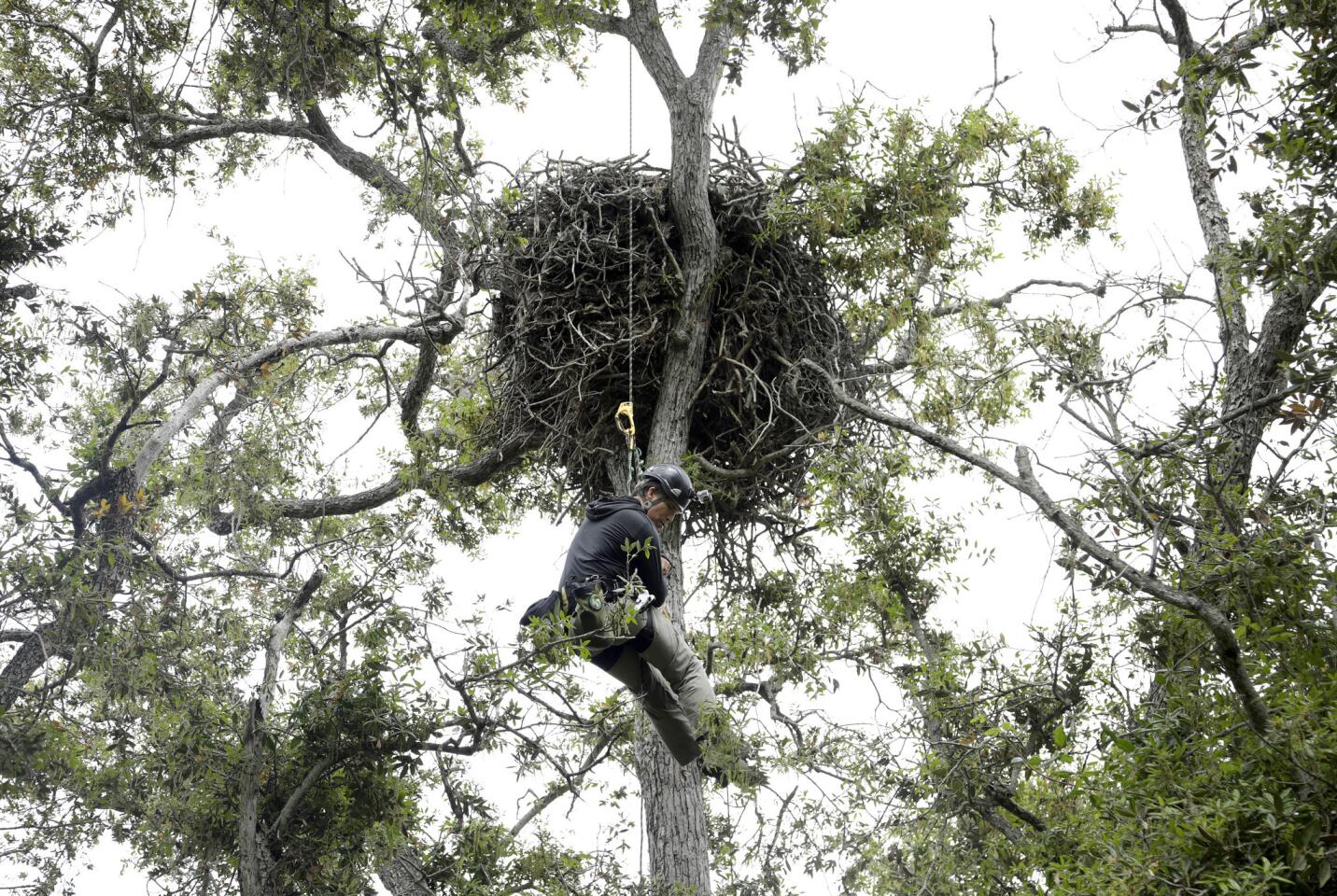
Dr. Peter Sharpe descends after returning a bald eaglet to the nest after taking measurements and banding its legs.
(Katie Falkenberg / Los Angeles Times)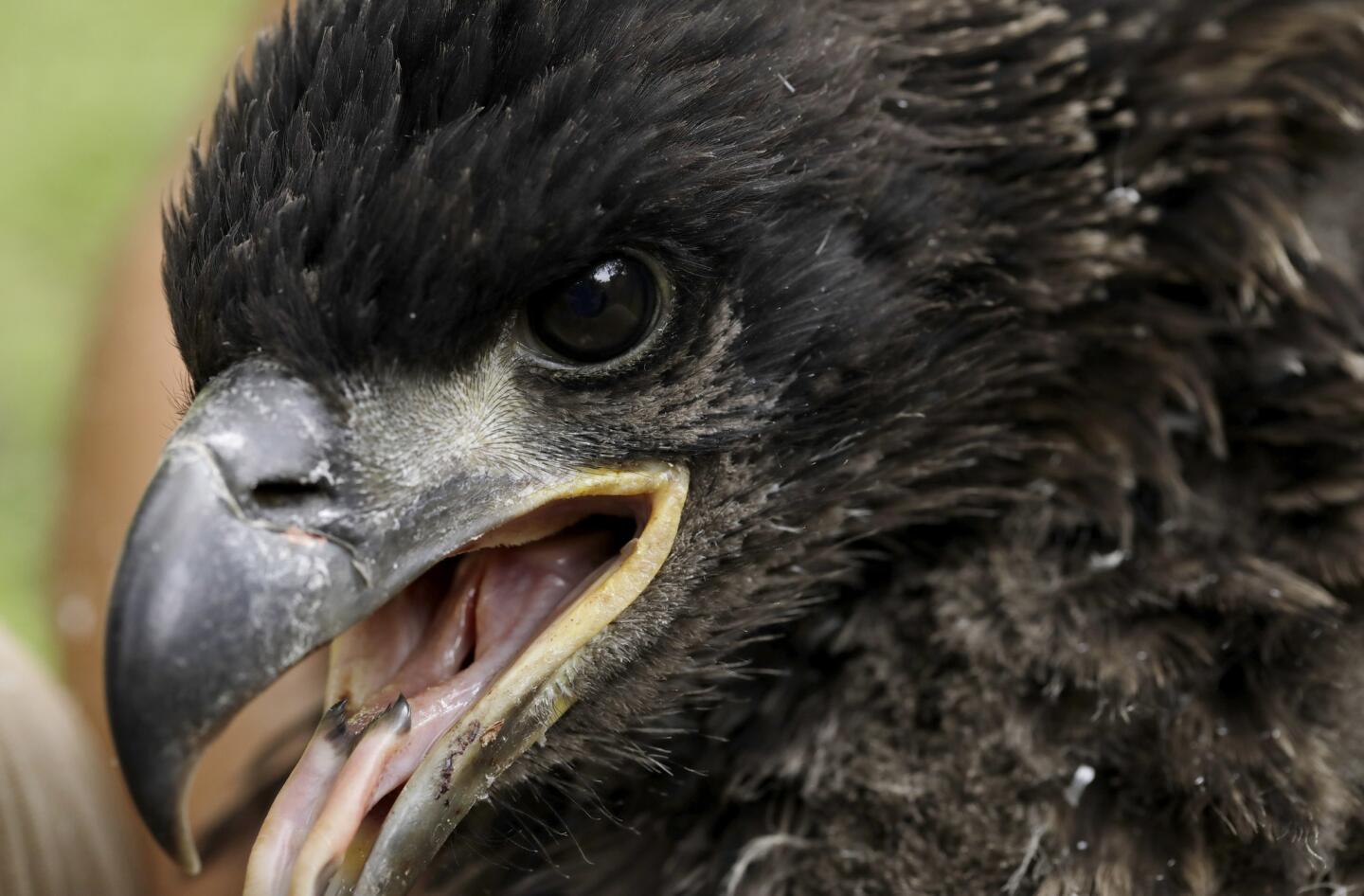
A bald eaglet is measured and banded in order to monitor him, before he is returned to the nest.
(Katie Falkenberg / Los Angeles Times)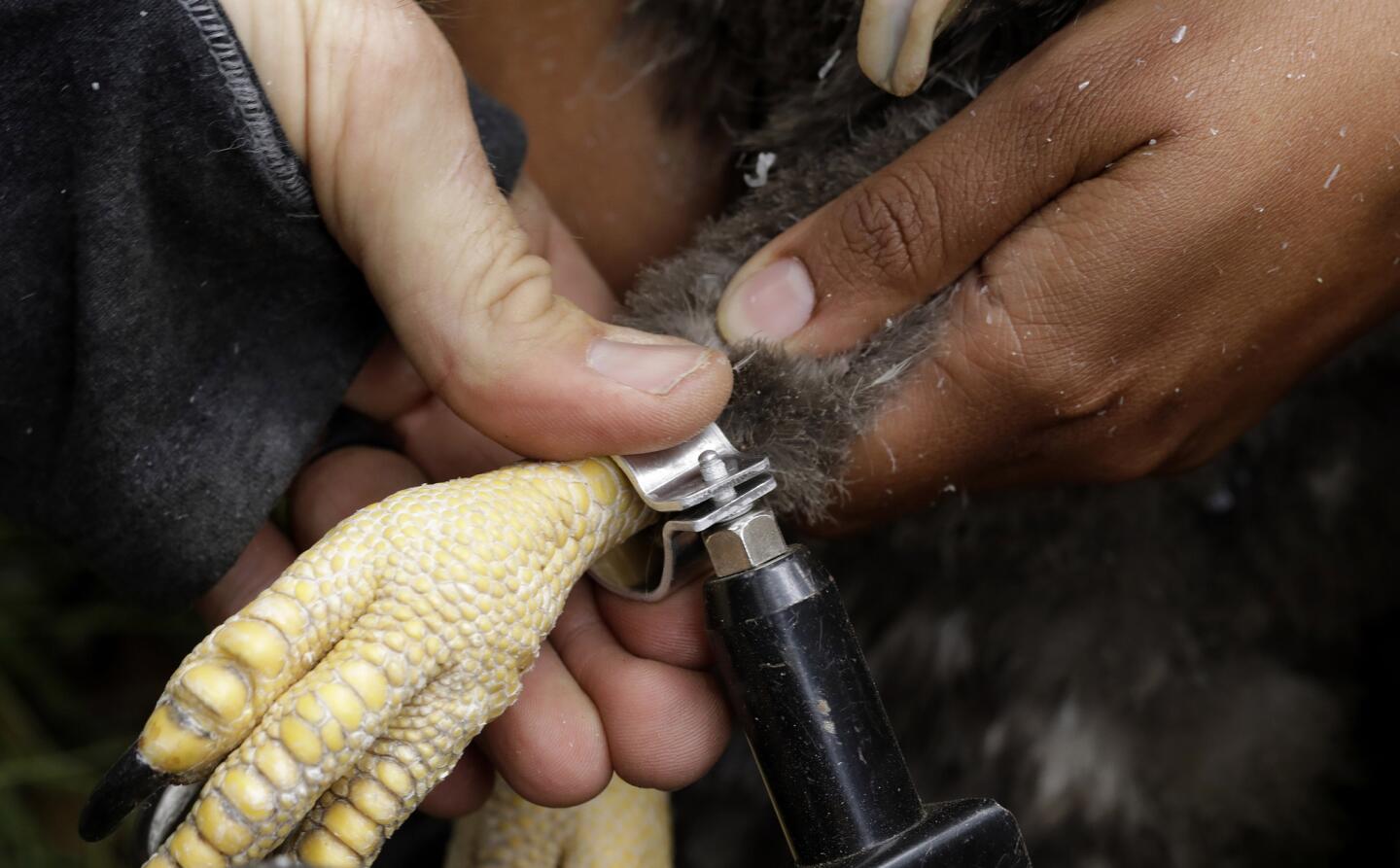
Dr. Peter Sharpe puts a band on the eaglet in order to monitor him.
(Katie Falkenberg / Los Angeles Times)Advertisement
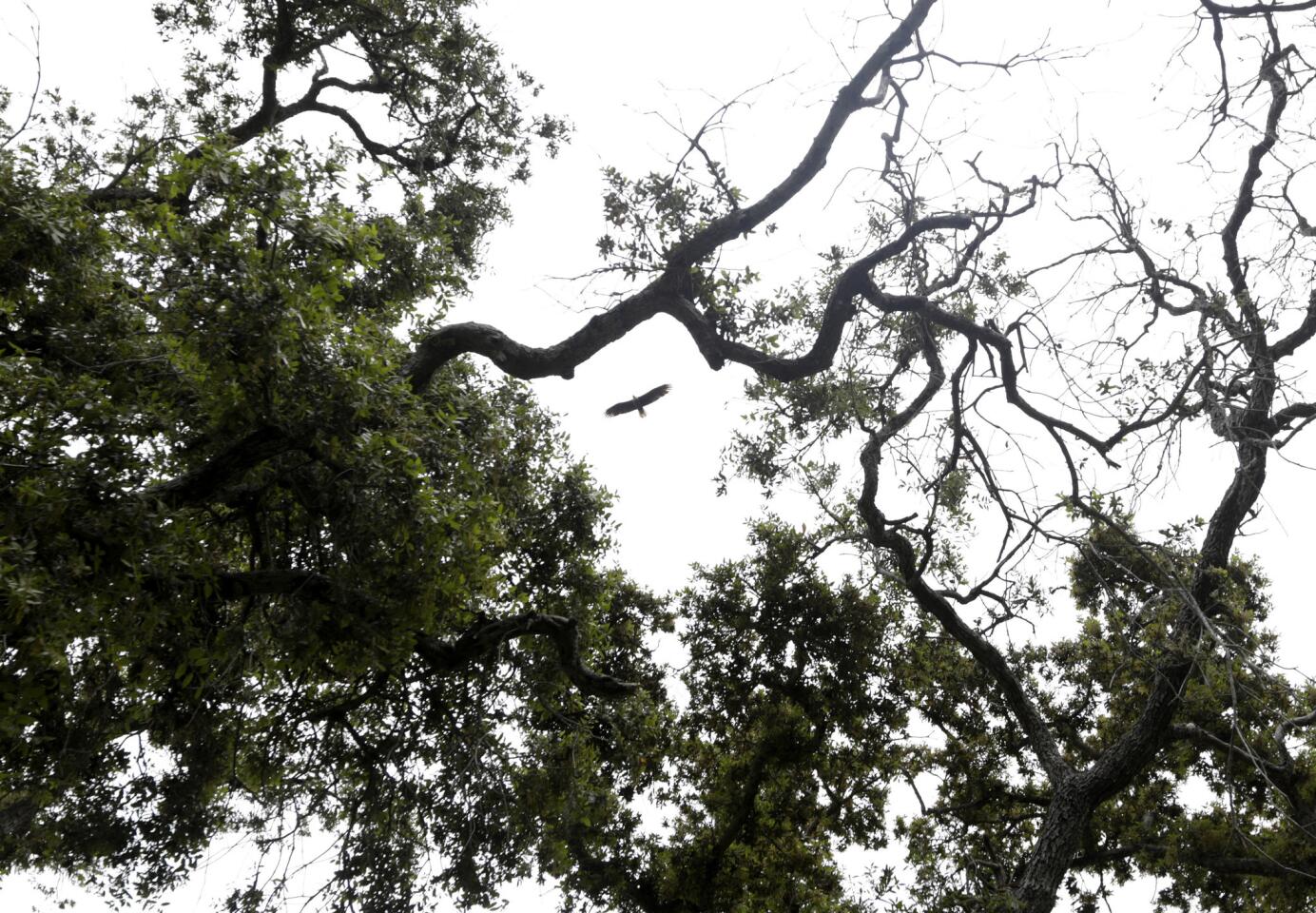
A bald eagle, the father or mother of the baby eaglet the biologists will be studying, flies overhead. Dr. Peter Sharpe, a wildlife biologist who has spent years trying to restore the bald eagle to its historic habitat on the Channel Islands.
(Katie Falkenberg / Los Angeles Times)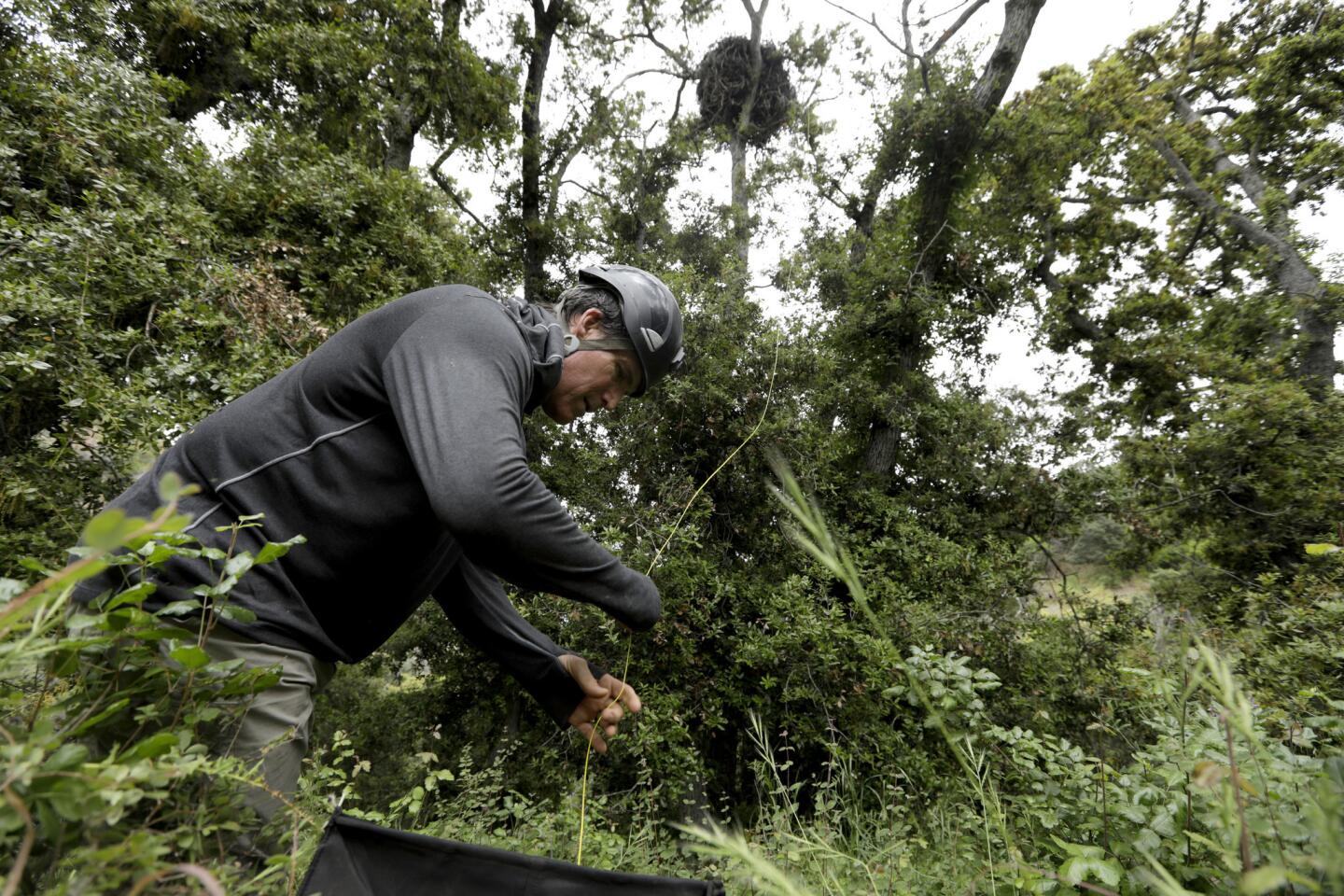
Dr. Peter Sharpe recoils a throw rope after attempting to get it through a “V” in two limbs near the bald eagle nest above, in order to climb to the nest.
(Katie Falkenberg / Los Angeles Times)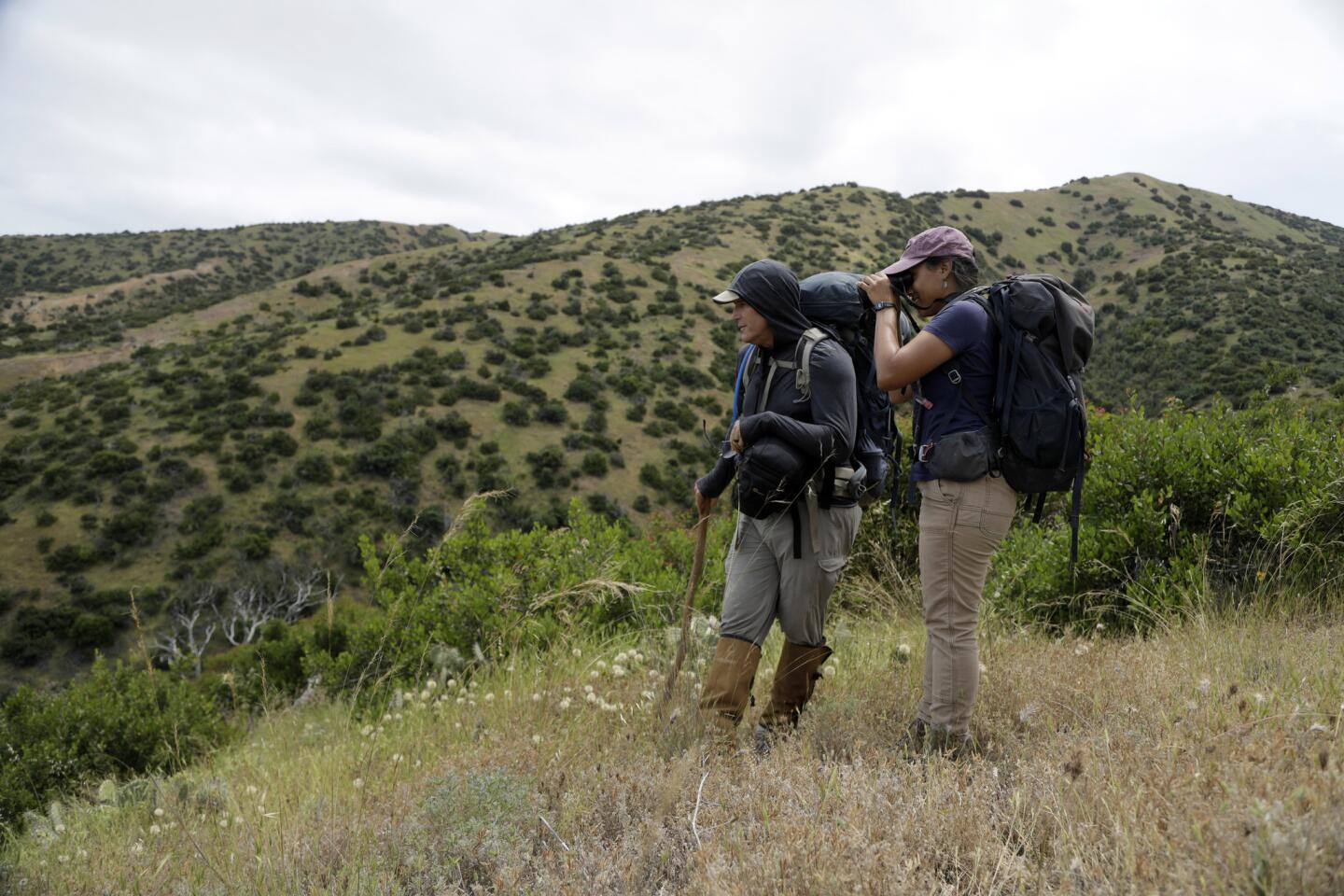
Wildlife biologist Dr. Peter Sharpe and Laura Echávez, a seasonal tech with the Institute for Wildlife Studies, stop to look at a bald eagle’s nest as they hike down to the nest in a forest on Catalina Island.
(Katie Falkenberg / Los Angeles Times)


